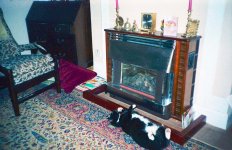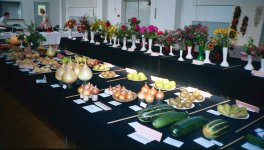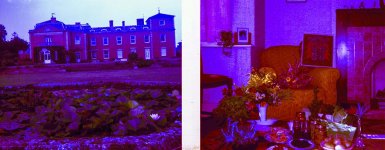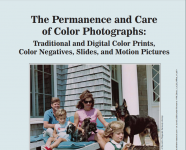- Messages
- 1,357
- Name
- Peter
- Edit My Images
- Yes
Actually my eye was drawn to the camera. Wonder what it is?
That’s up on the mountain road somewhere close to ´The Bungalow ´ by the looks of it.From a collection of negatives inherited from my dad's cousin Frank Holmes.
IOM TT, year?
View attachment 354390
View attachment 354391
The negatives are 6x6 and the orientation of the frames suggests a camera other than a TLR. Must have been a decent camera because the negative quality is almost uniformly good, despite obvious operational defects like camera shake and the occasional bad exposure.
Car 43 looks like an Alvis Speed 20 - there is a picture of it on this siteLove to know what make of car this is, it's very handsome. The car on the right is a Riley RM Series. I owned one when I was a student, a 1 1/2 litre RMA, sold it for £30 when I got married after graduation.



Amazing, it's the same car LYG 922.Car 43 looks like an Alvis Speed 20 - there is a picture of it on this site
https://alvisarchive.com/album-4/album-2/#jp-carousel-6110
Thanks for trying. You managed to squeeze a bit of green out of it.Adjusting the WB and saturation gave me this which probably isn't an accurate capture of reality either
View attachment 354790

Not sure if thus one is Milford Sound, South Island new Zealand?
Interesting, it had never occurred to me that slides had a lifetime limit, or at least one that was so short.There is some interesting and rather alarming information about the longevity of photographic slides.
Here is a suprising paragraph about slide projection times.
Keep the projection time of original slides or nonreplaceable duplicates to a minimum. For general applications, the total accumulated projection time for Fujichrome should not exceed about 5 hours (4 hours for Fujichrome Velvia); with Ektachrome do not exceed 21⁄2 hours; with Agfachrome do not exceed 2 hours; with Kodachrome do not exceed 1 hour (see Chapter 6).
Presumably the time given is in front of the projector light; in most slide shows, that would be less than a minute for each showing (time enough for the story about this slide showing @Andysnap being rescued from an island somewhere)...Interesting, it had never occurred to me that slides had a lifetime limit, or at least one that was so short.
I'm in the process of scanning another batch of Kodachromes and, as you say, the debris on the slides is unbelievable. I think it's partly the fault of them being mounted in carboard mounts as well as handling. The inside edges of the mounts are all hairy so I've been cropping tightly to avoid this and also the annoying, from the scanning point of view, rounded apertures of the older slides. The cropping, I'm confident in saying, quite often improves the mediocre pictures, although I am aware that is just my assessment of their merits. Included in the batch are some Agfachromes which are in sturdy plastic mounts with sharp rectangular apertures and these scan well.Presumably the time given is in front of the projector light; in most slide shows, that would be less than a minute for each showing (time enough for the story about this slide showing @Andysnap being rescued from an island somewhere)...
Some of my Kodachromes (of our New Zealand trip in 1974) were shown as slide shows several times. The colours show no signs of change, although the multiple handling has caused horrendous dust and fluff problems (unfortunately not auto-fixable with an IR scanner), and completely randomised sequence!
I have to say that I'm in a bad place now as far as what I should do with the originals, 200 or so. Most of them don't be deserved of scanning, however a few, of which the above are most interesting to me, perhaps I should conserve?
I bid for three boxes of slides the other day but dropped out at £50, maybe I should have pressed on, they were pictures of weddings and agricultural shows amongst other things.I buy slides from a well known online auction site. The price seems to have gone up a lot since this past year. Missed out on a really nice set a few days ago. I have a project ongoing called project unknown which is the same as Lee Shulman's The Anonymous Project but I only found out about his after I'd started mine. Most sets are on my website but I have a few processed and ready to go up as well as a few waiting to be scanned in
